The island nation was once the home of the largest cattle ranch in the U.S., but now its ranchers are under threat.
If the weather were clear, we’d see the white head and broad shoulders of Mauna Kea rising over these gentle, verdant hills. Facing away from the volcano, the green slopes would end in a dark blue outline where the sky meets the Pacific Ocean.
“I loved it up here,” Gary Rapozo says, looking misty-eyed through low-hanging drizzle as he points mauka, toward the volcano, and makai, toward the ocean. Today, I can see neither.
“Thousands and thousands of acres all to myself. It was quiet. It was a good lifestyle.”
Rapozo is 71, a quiet, burly man with Portuguese, Japanese, and native Hawaiian ancestry. He wears jeans and a black pullover sweatshirt that partially hides the leather knife sheath on his belt.
He says, “The word I use to describe this area is ‘fresh’.”
Makahālau Station sits at some 3,500 feet elevation on the northern peninsula of Hawaii’s Big Island. There’s a dark green, rectangular building, a small corral, a tack room, and a single blue Jeep parked out front. Two horses stare at us from the chilly hillside, their ears pointed forward. Far away, I see a drifting river of black-and-white flecks followed by the dot of a vehicle.
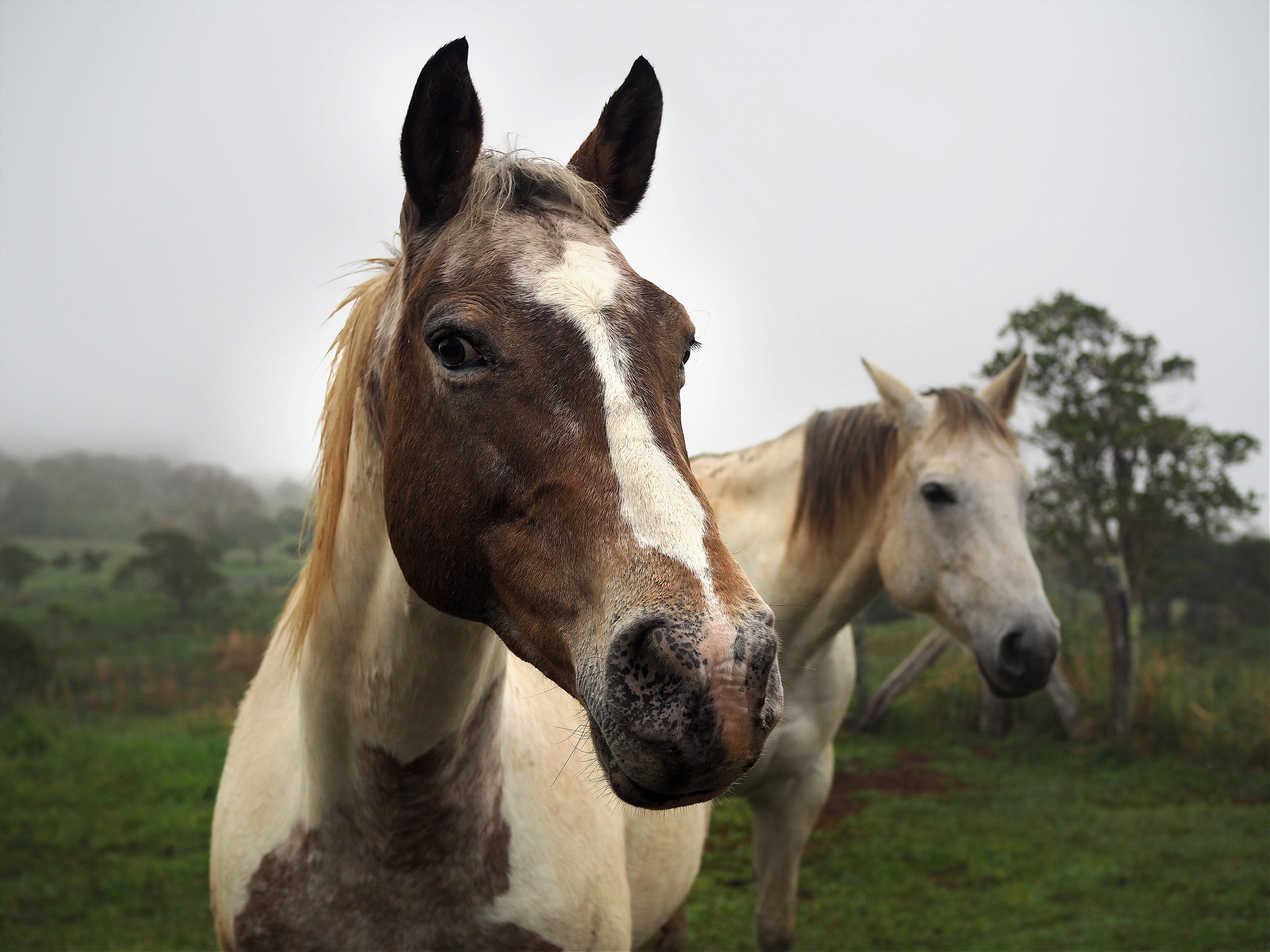
“Just one guy working today,” Rapozo comments as he opens the thin wooden door to the tack room. Diffuse light streams through a window caked in gray dust, giving dramatic shadows to the folds of leather and rope. “In the old days, there was a dozen of us. Raining or whatever, we’d saddle up and go.”
Rapozo began driving cattle for Parker Ranch in 1972, when the ranch was still the largest under individual ownership in the United States. At its peak, Parker herds wandered some 500,000 acres under the care of Hawaii’s cowboys, the paniolos. Together they left their mark on the physical landscape of Hawaii, as well as the culture and cuisine. As cow hooves introduced grasses that helped form the rolling grasslands around Waimea, the paniolos also helped popularize such Hawaiian icons as ukuleles and slack key guitars, coffee and sweet Maui onions, and the hamburger beef now part and parcel of plate lunches like loco moco or kal bi served with macaroni and rice.
Now the same forces of globalization that created the paniolo lifestyle are slowly eroding it, bringing questions about sustainability and food sovereignty on the islands. Over the past 20 years, it’s become more profitable to ship grass-fed Hawaiian calves 2,500 miles to the mainland, fatten them with grain in feedlots, slaughter and package them there, and then ship them back to
Hawaii, rather than simply to raise cattle on the wide-open grasslands. In the face of high shipping costs and a public that prefers the fatty flavors of grain-fed beef, many ranches have downsized, Parker Ranch included.
Since leaving the ranch in 2002, Rapozo focuses on a small herd of his own. He’s one of the nostalgic ranchers currently supplying 100 percent grass-fed beef to the small but growing locavore market willing to pay higher prices for quality. It’s a tenuous business, but eating directly from the land is a part of the paniolo tradition and lifestyle he loves.
In the tack room, Rapozo points to the wooden horse where for nearly 30 years he kept his saddle. He thumps the saddle horn, which, in the Hawaiian style called noho lio, has a twist of rawhide dried into a knot called the puka, or the navel.
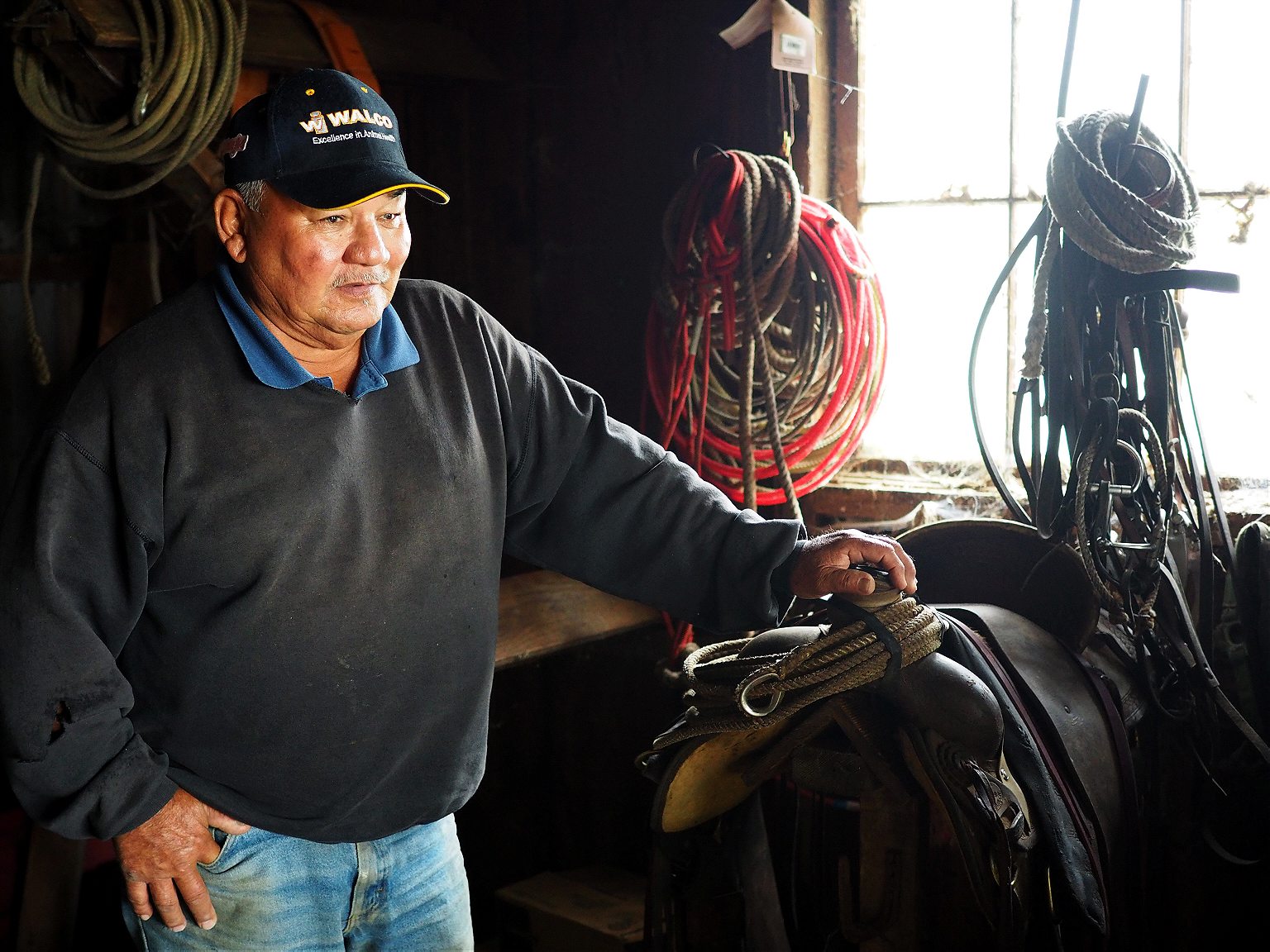
“It started right here,” Rapozo remembers. He means the mornings started here, lacing up his horse and breathing on his hands in the pre-dawn while cocoa and thick crunchy saloon crackers warmed on a cast iron stove. But Parker Ranch and Hawaii’s beef industry started almost literally right here, too.
Just a few miles away, the Parker Homestead Mana Hale is on the same red mud road that led us to Makahālau Station. We pass it again on the way back to Waimea. Through the wrought-iron gate is a grassy lawn rimmed with blue hydrangeas. The home is tiny: a compact New England “salt box” house embellished with a satellite dish nearly as big as the 170-year-old cupola over the door. The house’s original owner was John Palmer Parker, the first man permitted to slaughter and sell King Kamehameha’s cattle.
I get the full history later in the day. After the Rapozos drop me off at the Parker Ranch shopping center in Waimea (where the stop signs read whoa!) I wander through the town’s two traffic lights to the Paniolo Heritage Society at the old Pukulani Stable. The small museum was originally the Parker Ranch stud barn, a place to keep uncastrated horses for breeding. It now houses the “Paniolo Hall of Fame,” a wall dedicated to honoring local cowboys, as well their tools and saddles. Rapozo says his picture is on the wall toward the bottom, but I can’t find him.
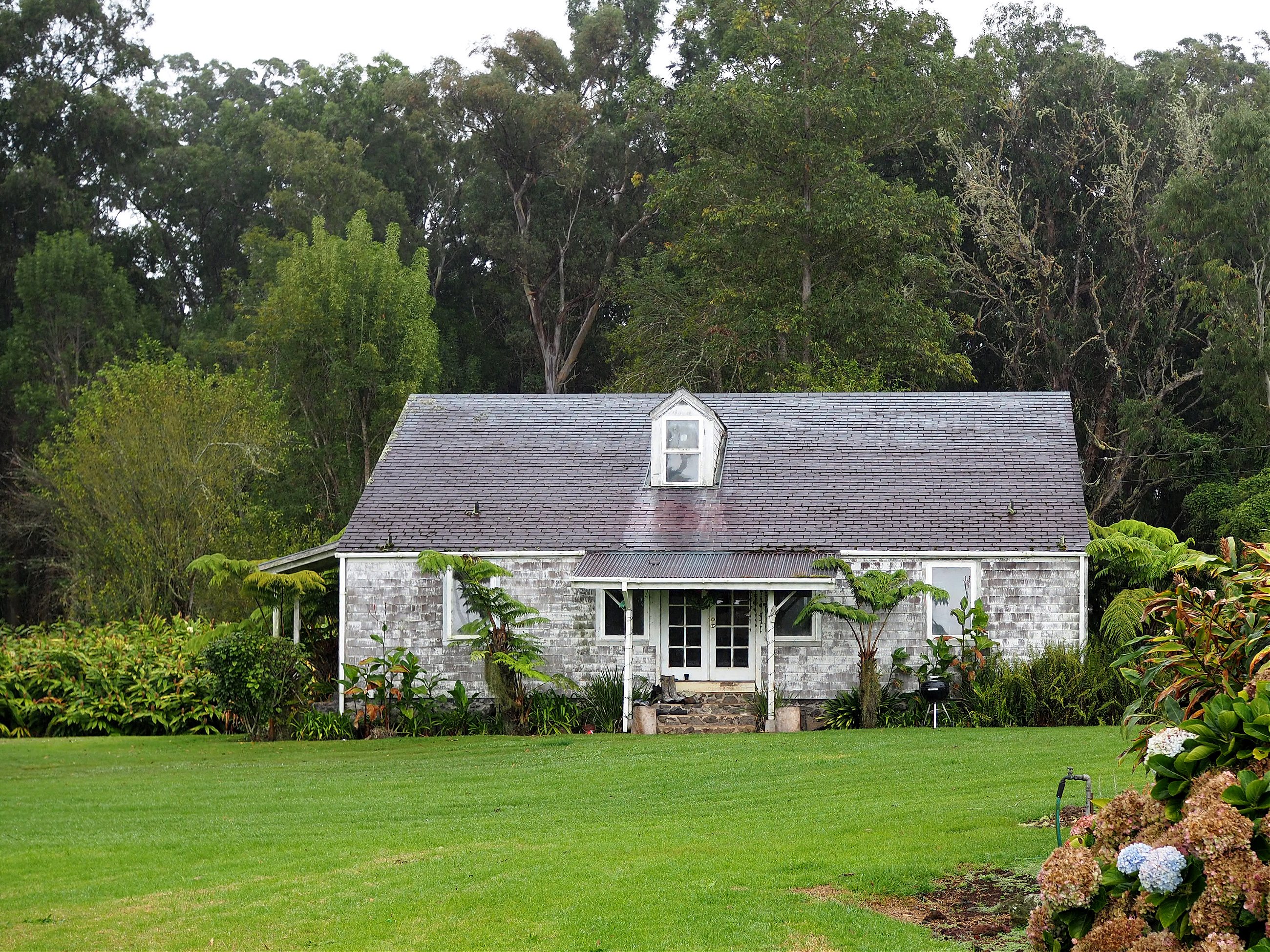
Instead I find Uncle Pete Gorrell in the yard sanding knife handles for the museum’s saddle shop. He’s wearing a baseball cap and a fine layer of sawdust.
“I’m a saddle maker, leather worker, I make knife cases, all that kind of stuff.” He pauses wryly. “Notebooks. iPhone cases.”
He says that you can recognize a paniolo because he always kept a knife on his back pocket, so when he turns to get his glasses, my eyes dart to his belt loop. Of course, he has a knife.
Gorrell settles into a chair below coils of rope and lassos. “The ranch is dated to 1847, when John Palmer Parker bought his first two acres and built the homestead, but that’s not when it started,” he begins his yarn.
When Captain Cook stumbled across the islands in 1778, word quickly spread among the fur, whaling, and spice traders that Hawaii was a good place to resupply. The first five cows and one bull arrived at Kawaihae Harbor, just 10 miles away from the stables, around 1793. They were a gift to King Kamehameha I from Captain George Vancouver, a British explorer who understood that European sailors missed eating beef. He recommended that the king place a kapu, a royal prohibition, on eating the cattle until they’d established a herd.
“They made an enclosure in the hills, just above there,” Gorrell points at the hills over Waimea from his chair. The sun has come out, slanting through the moist air in a way that turns the puddle under a mailbox reading “Paniolo Pride” into a rainbow. “About 400 acres enclosed with lava rock walls, but the cattle broke out and since there was no predation, no mountain lions or wolves, and also nobody doing castration, so by the mid 1820s it was estimated that this island had as many as 30,000 head of cattle.”
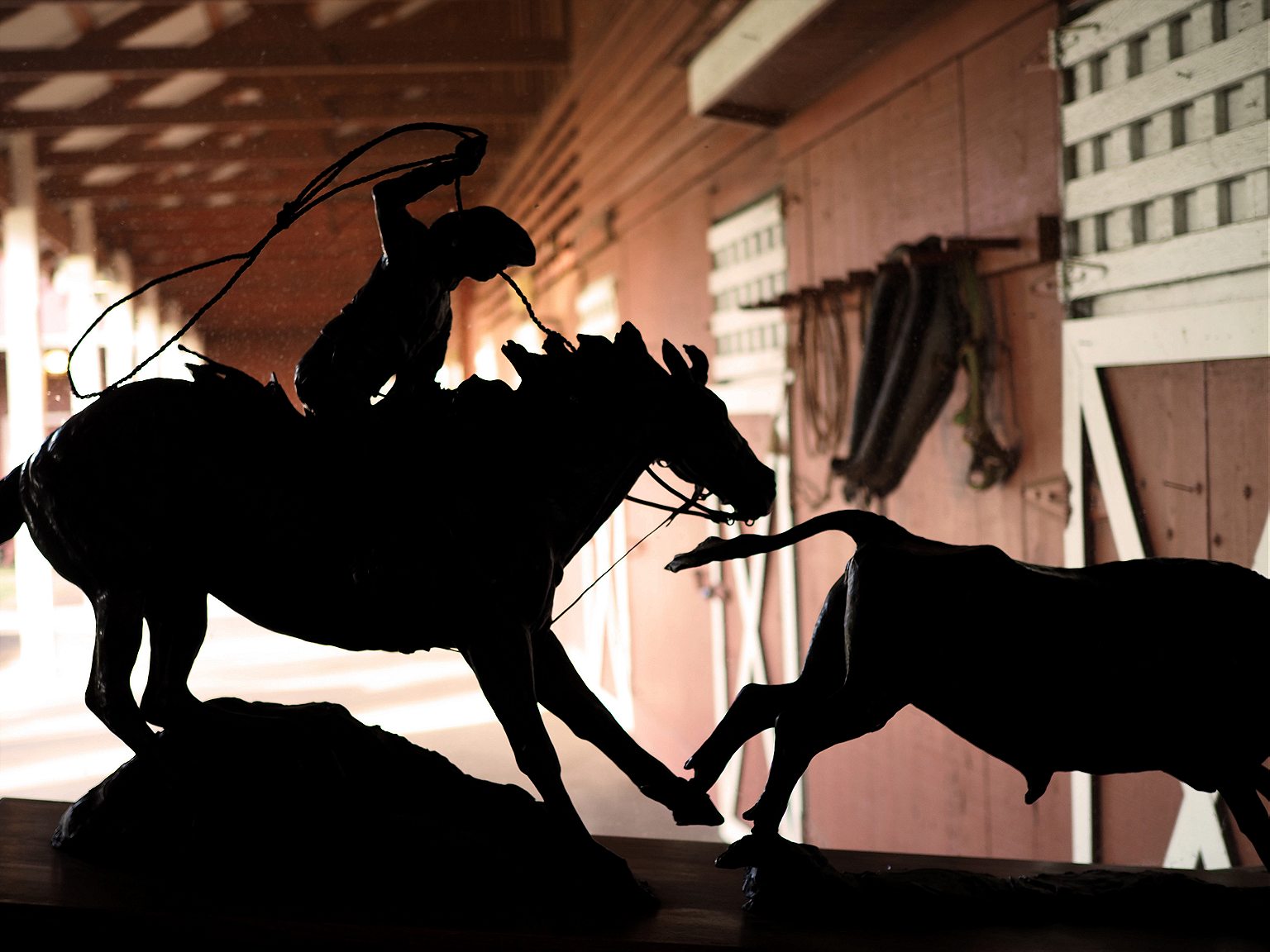
Around 1814, King Kamehameha ordered a large wall built to protect the main city from wild cattle knocking down the hales, traditional grass houses, tromping through sugar cane and taro fields, and occasionally trampling people to death. By King Kamehameha II’s reign, the sandalwood forests had also been mostly tapped and the king had an environmental and economic disaster on his hands.
When John Palmer Parker, a ship’s clerk from Massachusetts, abandoned his ship in 1815 and made Hawaii his permanent home, he was employed as the first royally sanctioned bullock hunter, selling the king’s cattle as tallow, hides, and salted beef to the increasingly numerous whaling ships. Cattle hunting became a major revenue source for Hawaiian royalty, but hunting or trapping the 1200-pound animals was a dangerous, time-consuming job. Tame cattle are healthier, fatter, and easier to manage.
Fortuitously, a Spanish cowboy, Joquin Armas, arrived on a whaling ship from California in 1831. The king brought him to Waimea to teach locals the art of catching and domesticating cattle. With no “s” in the Hawaiian language, locals called the colorful cowboy who spoke español the “Paniolo.” Over the next few decades, more cowboys arrived, settled, married, and left their descendants Spanish-sounding surnames, food spiced with black pepper, onions and hot chilies, and the lifestyle that stewarded Hawaii’s third-most important agricultural industry after sugar and pineapples for about six generations.
“It’s still the best lifestyle,” says Guy Andrade, holding the wheel steady as the four-wheeler rocks over grass tussocks. The cows look at us, unsurprised, as I gasp at the cerulean blue ocean behind them. I’ve headed down the volcano from Waimea, still in cattle country, and the day is balmy with a scattering of high clouds. It’s perfect.
If there’s a future for Hawaiian beef, it’s going to be more for home use
When the cows see Andrade, they run down the hill toward the corral. “I’m sorry guys, I’m wasting your time,” he calls to them. He supplements their diet, but it’s not feeding time yet.
“Some of them follow me around worse than a dog,” he complains. “But it’s better than having to chase them, like in the old paniolo days. These guys I can just call.”
Andrade is sixth-generation paniolo. He rides an ATV, not a horse, which is funny since he’s also a ranch hand at Waipio on Horseback (WOH), a 600-acre historic working ranch with 250 head of cattle that also takes tourists on rides through the countryside. “They do the tourists, I do the cattle,” he says.
He’s surprisingly pessimistic about not just grass-fed beef, but cattle ranching in general. As he shows me the herd, he explains that the whole problem is that it’s cheaper for stores to get beef from the mainland.
“Prices are low,” he explains while showing me the herd. “We all unhappy about the price. If there’s a future for Hawaiian beef, it’s going to be more for home use, like individuals. Nobody’s going to be able to keep cattle with the prices.”
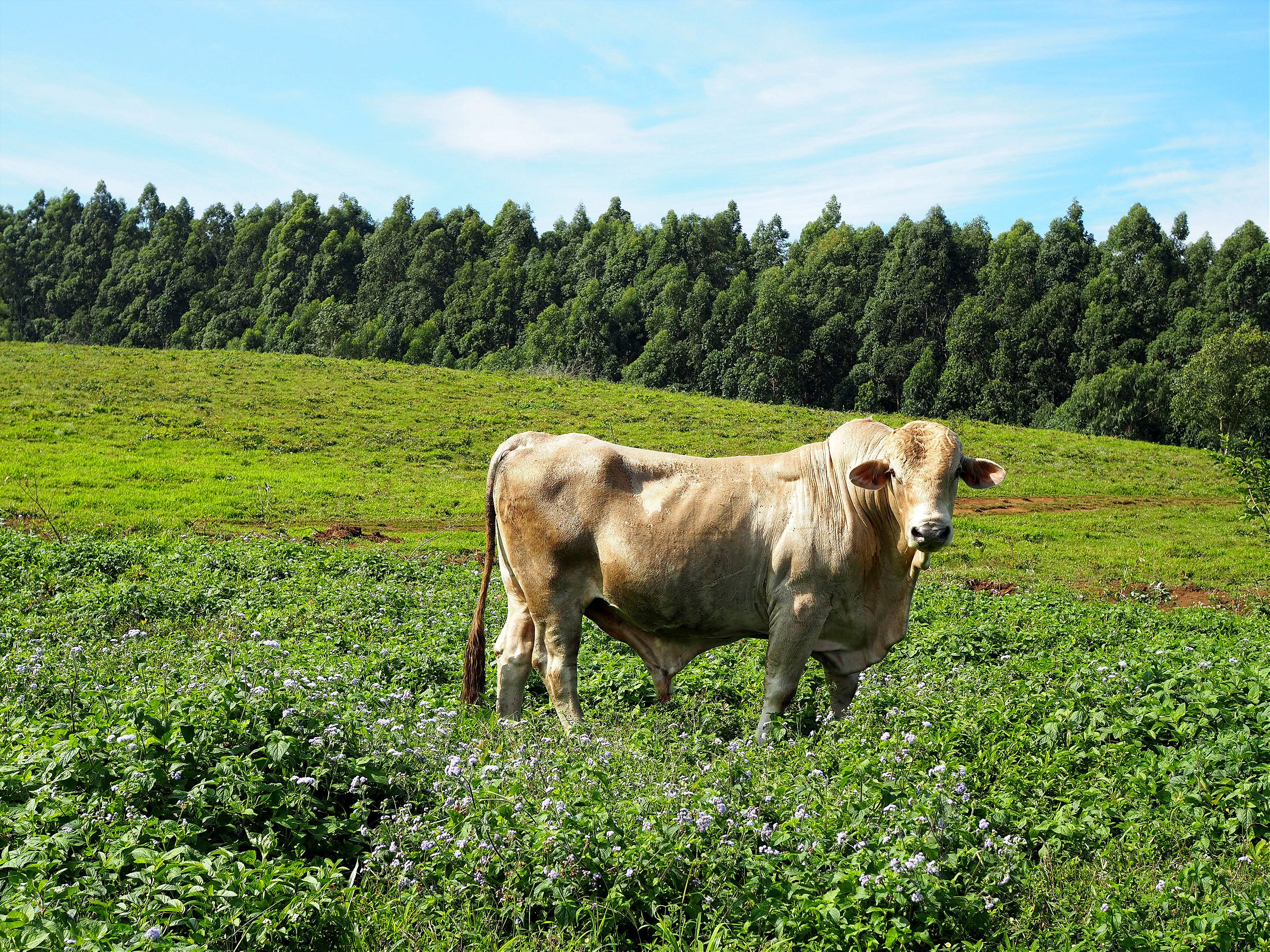
Even if you raise grass-fed cows to full weight, which takes a year longer than grain-fed, Andrade says, it’s a struggle to get them slaughtered for market in Hawaii. The two slaughterhouses on the Big Island don’t have the kill capacity necessary, meaning they are routinely overbooked.
Gary Rapozo optimistically puts the blame on growing interest in local and grass-fed beef. “More people are jumping on the grass-fed program, so that’s why we’re having backup,” he explains. “It’s starting to be a trend, it’s starting to happen now.”
He could be right. In 2014, even Parker Ranch created a pasture-to-plate subsidiary, the Paniolo Cattle Company, dedicated to keeping more beef on the islands. Meanwhile, chefs and ranchers join forces at events like the annual Taste of the Hawaiian Range Agricultural Festival to educate the public about eating locally. The festival’s website provides lists of restaurants and grocery stores carrying locally raised beef.
“We could be almost self-sufficient with the amount of land that we have, but the priorities are different,” Rapozo grumbles. “You can’t eat tourists. When something happens, if they stop coming in, what are we going to do?”